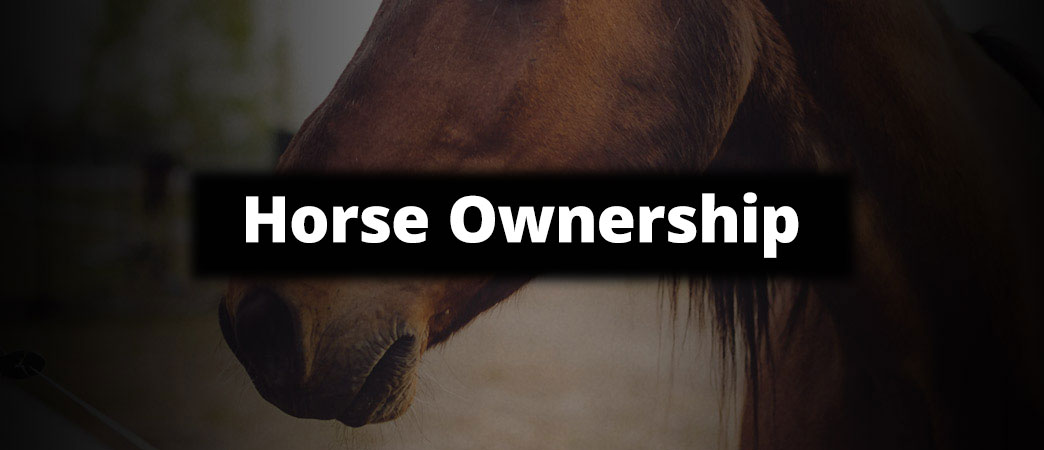


THE BASICS
Owning a Standardbred racehorse must be approached as a business: There will be revenues and expenses, risks to be managed, and tax and regulatory considerations. Thus, you will want to structure your racing business in one of several ways:
Fractional Ownership
Fractional groups offer an easy, affordable and low-risk way to get involved with racehorse ownership. As a participant in a fractional group you will own 2 percent of a racehorse for a limited term, generally between five and six months. With a 1-4 percent ownership, you will not have to apply for a state license to own your horse.
The cost to buy into these groups generally ranges from $300-$500 and there are no additional costs after the purchase price. The trainer of the horse is responsible for all decisions regarding the care and training of the horse, while the program manager is responsible for communicating with the participants and answering questions.
Fractional owners enjoy the entire behind-the-scenes benefits of traditional owners, such as visiting their horse at the stable and having their photo taken in the winner’s circle when their horse wins.

Individual Ownership
In this case you pay all the bills and take all the risks, but you also reap all the rewards–and the purses your horse wins.
Partnerships
In a partnership, you and your partner(s) share paying the bills and assuming risks–and each takes a cut of the purses. Partnerships can also be “unbalanced,” in which each partner owns a different percentage, and thus pays a different percentage of the expenses and earns a varying cut of the purse. Your trainer, of course, can also be your partner.
Leasing
Horses, like any business asset, can also be leased. In a lease, you (the lessee) will have control of the horse for a fixed period of time–in exchange for a stated percentage of the purses won. During the term of the lease the lessee generally pays all the expenses associated with racing. The benefit is that it’s usually cheaper to lease a horse than pay what might be a high cost of buying one. The U.S. Trotting Association mandates that copies of the lease be registered with the USTA (to divulge true ownership).
Limited Partnership
A growing number of people, especially those with limited amounts to invest, or who fear losing more than what they have budgeted, have invested in limited partnerships. It’s a common investment form: In a limited partnership you put up a fixed amount towards the management of a horse’s racing career. A “general” or “managing” partner makes all the decisions about acquiring a horse, including selecting a trainer, and making stakes payments. You will share proportionately in the purses won, when they exceed expenses, and in a worst-case scenario will not lose more than what you have invested. Such partnerships are widely advertised in trade publications and online.
Corporation
Racing corporations, just as in the business world, are entities that are legally separate from its owners or stockholders. They offer their owners legal and tax advantages not enjoyed by sole owners, partners, lessees, or limited partners, but are heavily regulated.
Limited Liability Company
These are partnership and corporation hybrids, combining features of both. It offers the company members the legal protection afforded to corporations, but frees them of the considerable regulatory hurdles placed before corporations. Get legal and accounting advice! Your legal and tax advisors will be key members of your stable. Your lawyer will you advise about the various ownership forms, and your tax advisor will tell you how racing finances are governed by state and federal tax regulations.
Purses
The purse for a race is most often split five ways. Here’s how:
- 50 percent to the winner
- 25 percent to second place
- 12 percent to third place
- 8 percent to fourth place
- 5 percent to fifth place
From the amount won by his or her horse, the owner also pays 5 percent to the trainer and 5 percent to the driver. For example, if your horse wins a $10,000 race the winning share of the earnings are $5,000, and 5 percent for the trainer and driver ($250) each will be deducted. The owner will be sent a check for $4,500.
On a typical racing program, between 80 and 100 horses will be entered, with 55 of them sharing purse money. Even without winning a race, it’s likely you will share in at least a portion of the evening’s purse money.
Also, while stakes payments and starting fees must be paid in advance by owners for some races, “overnight” races require no entrance fees. Don’t forget there are other revenue streams for your stable: If a horse you bought improves, he or she becomes more valuable—and that means the possibility of selling at a profit. Or, if you decide to invest in breeding stock and raise yearlings you might turn a profit when you sell your youngsters, either privately or at auction.
The Internal Revenue Code permits owners to treat their racing operations just as it treats any small business: Racing and breeding stock may be depreciated, expenses deducted and so forth. It’s not strictly a tax shelter, but your accountant, who will be another important member of your stable, will explain the tax situation.
The Rewards Are Many
Owning a Standardbred racehorse is a risk-reward proposition perhaps unlike any other. There are many possible upsides to the experience.
The thrill of rooting for your horse, especially when it wins, is unequaled. Many people involved in racing meet others in the sport and make friends for life. The rewards that racehorse owners enjoy include:
- Owning a horse purchased for a modest amount can potentially win big money—or at least more than they cost to buy and keep.
- A colt with outstanding ability among his peers may have a future career as a stallion, and if successful in the breeding shed can generate a six-figure income each year, for as long as 15 years.
SIGN UP TO GET OUR EXCLUSIVE CONTENT
